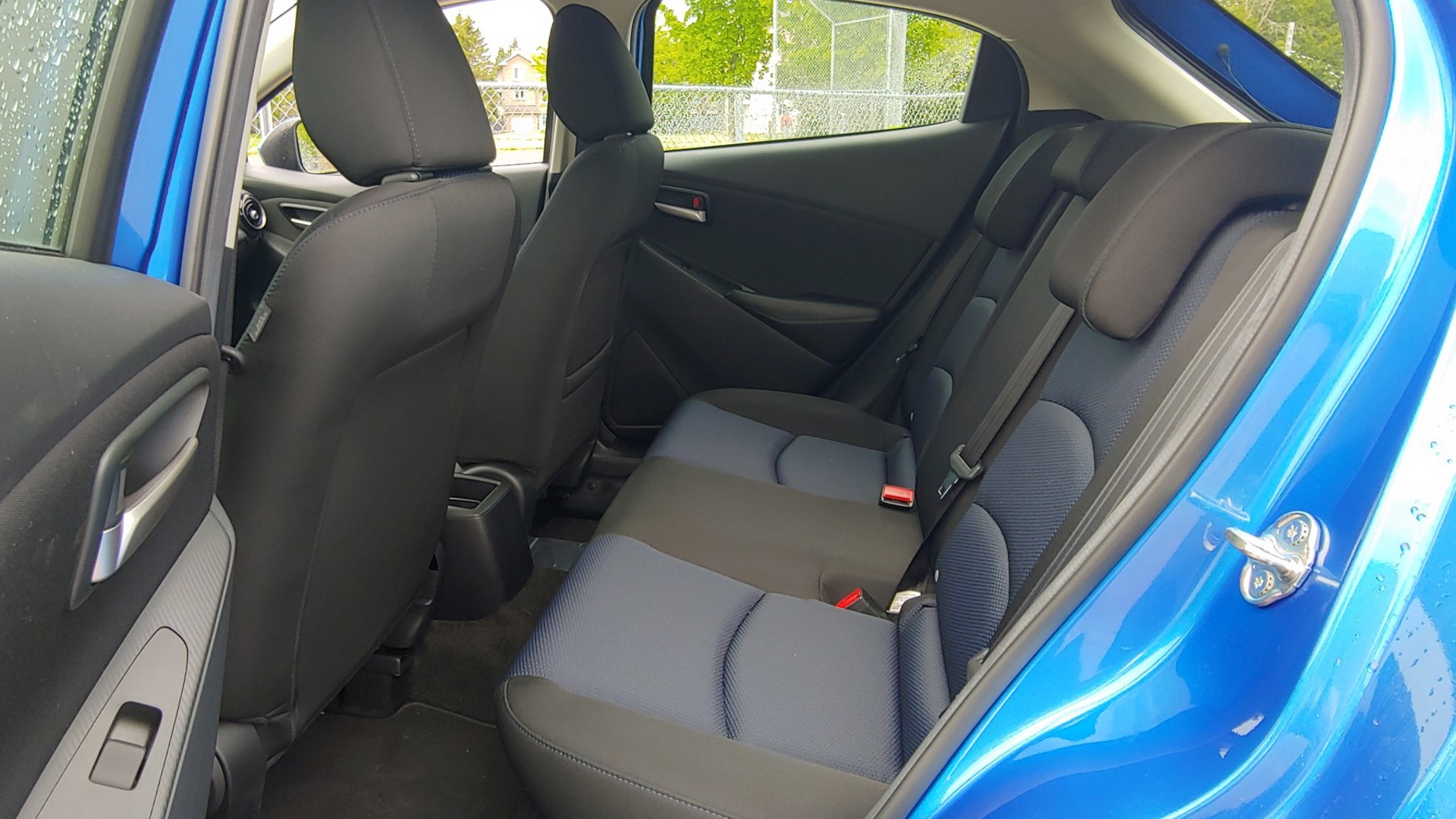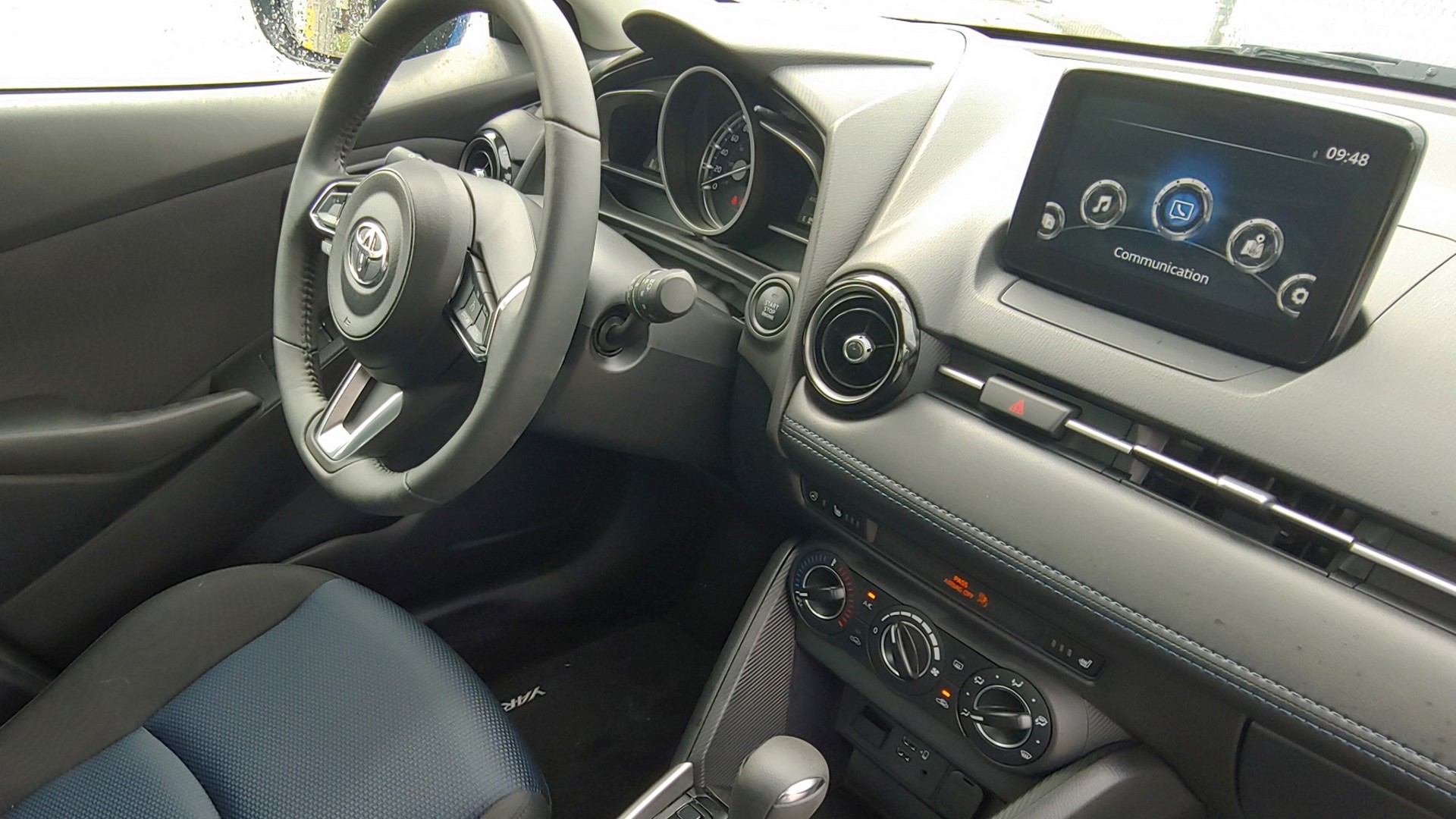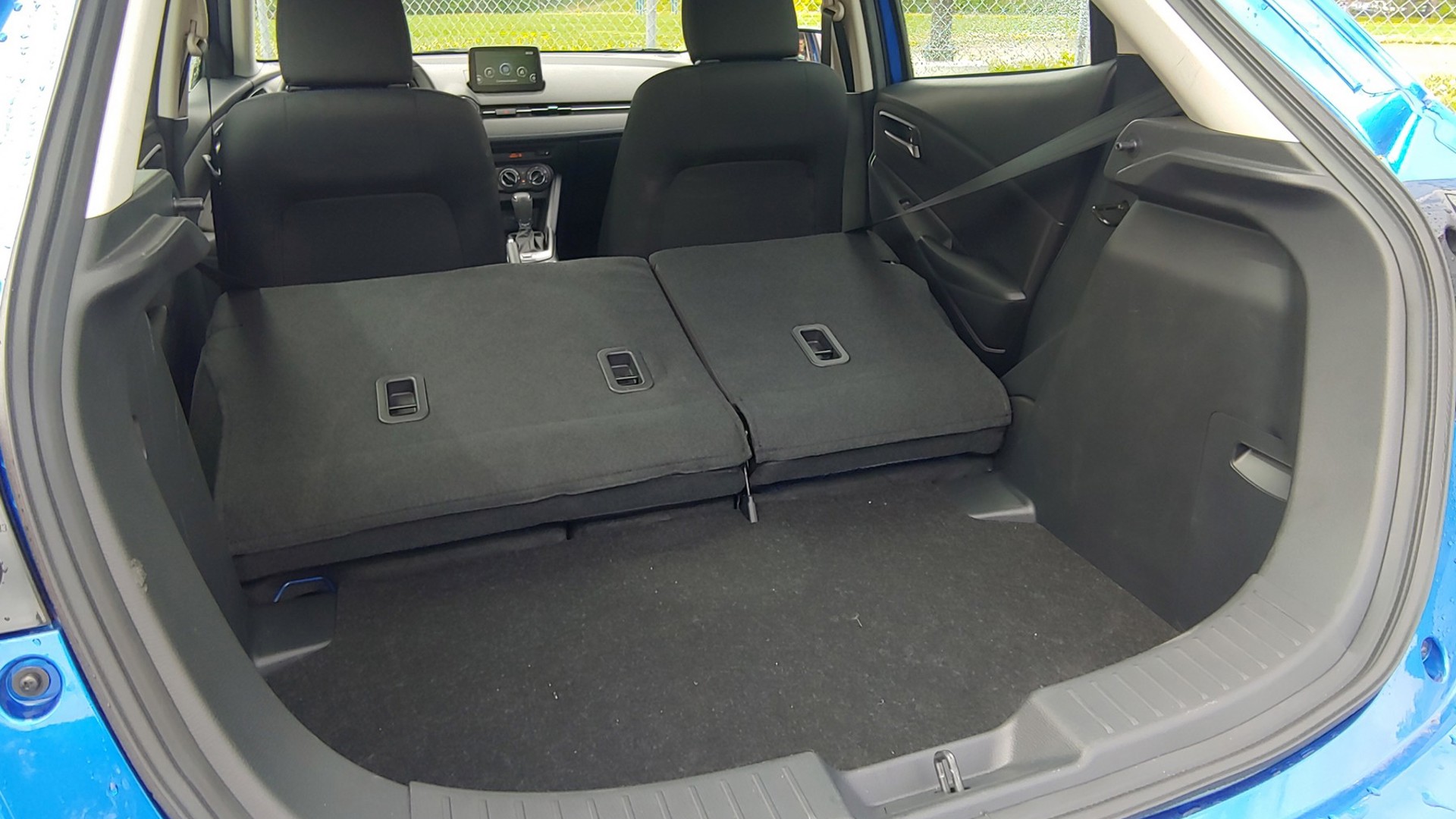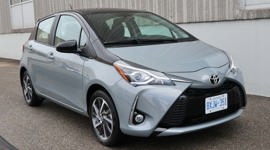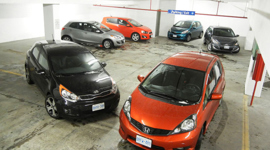 AutoTrader SCORE
AutoTrader SCORE
-
STYLING8/10
-
Safety9/10
-
PRACTICALITY6/10
-
USER-FRIENDLINESS8/10
-
FEATURES7/10
-
POWER5/10
-
COMFORT7/10
-
DRIVING FEEL8/10
-
FUEL ECONOMY8/10
-
VALUE7/10
Corporate collaboration is a concept Toyota has taken to heart over the last decade to maintain its presence in low-volume segments without pouring resources into the design and engineering of new models.
It started with the Scion FR-S (now the Toyota 86), a small sporty coupe designed by Subaru and sold by that brand as the BRZ. More recently came the reinvented Supra, whose distinct styling shrouds a platform, mechanicals, and cabin borrowed from the BMW Z4.
Toyota’s latest collab is a lot less exciting, but no less important to the brand’s image. The new 2020 Yaris subcompact hatchback is underpinned by oily bits built by Mazda and used in that company’s subcompact offerings in other markets.
In acknowledgement of the subcompact class’s falling fortunes in most of Canada, only Toyota’s Quebec dealers actually stock the new Yaris hatch, a nod to that province’s disproportionate attraction to small, inexpensive cars. In the rest of Canada, this car is available by special order and subject to a higher delivery charge.
Styling: 8/10
Toyota’s only notable change to the Yaris’s appearance (relative to its Mazda2 origins) is a grille that carries forward the wide-mouthed look of the last-generation Yaris. Otherwise, the exterior and cabin are sourced directly from the Mazda version of the car.
The Yaris’s front-end treatment is less elegant that of the Mazda2, but overall, this is a handsome little car that looks more expensive than it is.
Safety: 4/10
Toyota leaves its Safety Sense suite out of the new Yaris, so its least-expensive car now only includes a low-speed forward collision detection/avoidance system. While I think many Yaris buyers – especially nervous and new drivers – will appreciate that, the lack of the old car’s lane-departure warning and automatic high-beams is a step backward.
Mazda offers more advanced safety features on the Mazda2 in other markets, so we surmise that Toyota opted out of those in the Yaris to keep the price down.
Practicality: 6/10
The Toyota Yaris hatch’s cargo area is small but useful, and the rear seats fold 60/40 for more capacity. They don’t fold flat, though, leaving a hump up to the rear seatbacks that many small hatch owners will be familiar with.
User-Friendliness: 8/10
Yaris’ user-friendliness benefits from Mazda’s infotainment system design, which uses a console dial to control the dash display. It’s easier to use than touch-based setups because it diverts less of the driver’s attention away from the road.
My top-trim Yaris XLE test car sticks with manual air conditioning controls that consist of three knobs and four buttons. All I missed was the automatic temperature control function that some of the Yaris’s competitors offer. However, the Yaris XLE does include heated front seats and a heated steering wheel.
Features: 7/10
Power door locks, windows, and side mirrors are all included, as are keyless entry, push-button engine start, and air conditioning. A six-speaker stereo – with Bluetooth, as well as Apple and Android smartphone integration – is standard with a 7.0-inch touchscreen.
My XLE tester added a heated/leather-trimmed wheel, heated front seats, fog lights, and 16-inch alloy wheels (which replace 16-inch steel rims).
Also, only the base model comes with the manual transmission. A six-speed automatic is standard in XLE and optional in the base trim.
Power: 5/10
While I acknowledge this is hardly a valid criticism of an economy car, acceleration is one of the Yaris hatch’s few weak points. The Mazda-built 1.5L engine coincidentally generates the same 106 hp and 103 lb-ft of torque as that in the old Yaris, but peak torque comes 200 rpm lower in the rev band.
Acceleration from a stop is all right, with the little motor happily buzzing through the transmission’s first three ratios. Once you reach highway speeds, though, the Yaris starts to run out of juice; this is not the car for daring two-lane highway passing moves.
Comfort: 7/10
Interior space is good for the Yaris’s size, especially given that Toyota’s numbers suggest this car is roomier inside than the Corolla hatchback. The front seats are on the narrow side – that’s pretty normal in a little car – but the Yaris feels like it would be a fine vehicle for long-haul driving. The car’s width means that, while there are three seatbelts in back, you’ll do best to limit occupancy back there to two adults.
Driving Feel: 9/10
You won’t find many cars in the sub-$20,000 price bracket that handle as crisply and confidently as the Yaris, and for that you can thank the car’s Mazda origins. Over the road, the Yaris hatch feels a lot like a Mazda3 that lets more road noise into the cabin. Quite frankly, I revelled in throwing this little car into speedy turns because, one, the chassis is more than up for it and, two, that meant not having to wait for the car to get back up to speed afterward.
Fuel economy: 8/10
My Yaris hatchback tester posted average fuel consumption of 7.3 L/100 km in a week of city driving, matching its Natural Resources Canada city rating. Its highway estimate is 5.9 L/100 km.
Those figures are big improvements over the outgoing Yaris hatch, whose economy suffered from an outdated four-speed transmission and a relatively low-tech engine. This new car’s motor benefits from Mazda’s SkyActiv suite of fuel-saving tech and design elements.
Value: 7/10
Toyota has made a big push to improve the money-to-features ratio in its models, and it shows in the Yaris. The new hatch starts at $16,790; the automatic transmission is a $1,200 extra in the base trim, and my XLE test car goes for $19,450.
South Korea’s Hyundai and Kia are typically winners in terms of value, but the mid-range Hyundai Accent Preferred offers little not included in the Yaris XLE for a similar price. In fact, you have to move up to the Ultimate trim at $21,649 to get a heated steering wheel, though that trim also includes passive keyless entry and LED headlights.
The Kia Rio LX+ is a close match features-wise for a few hundred dollars less, but if you want more stuff, you’ll once again be spending well over $20,000.
Over at Honda, the cleverly packaged Fit is about $1,000 more than the Yaris XLE with similar features, minus any advanced driver assists, which come in the $21,090 LX-Honda Sensing trim.
If you’re shopping on a strict value-for-transportation yardstick, the Chevrolet Spark and Mitsubishi Mirage might be worth a look. However, once loaded up, both those models end up just a few hundred dollars under the Yaris while offering less refinement.
The Verdict
Toyota has proved again that it’s good at choosing who to join forces with. The 2020 Yaris hatch feels like a high-quality subcompact that lives up to the nameplate’s reputation for economical driving; that it also boasts sharp handing from its Mazda chassis is the cherry on top of the sundae. The only truly disappointing thing about the new Yaris is its limited availability, which means a lot of Canadians will overlook this well-done small car.
| Engine Displacement | 1.5L |
|---|---|
| Engine Cylinders | I4 |
| Peak Horsepower | 106 hp @ 6,000 rpm |
| Peak Torque | 103 lb-ft @ 4,000 rpm |
| Fuel Economy | 7.3 / 5.9 / 6.6 L/100 km cty/hwy/cmb |
| Cargo Space | 449 L |
| Model Tested | 2020 Toyota Yaris Hatchback XLE |
| Base Price | $19,450 |
| A/C Tax | $100 |
| Destination Fee | $1,645 |
| Price as Tested | $21,195 |
|
Optional Equipment
None
|
|











